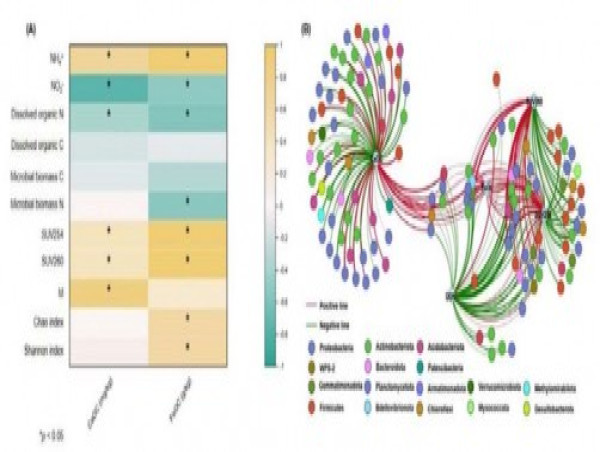FAYETTEVILLE, GA, UNITED STATES, July 1, 2025 /EINPresswire.com/ -- Soil viruses play an influential but often overlooked role in soil carbon (C) dynamics, directly affecting both the release and sequestration of carbon. The research uncovers the significant role these viruses play in enhancing the accumulation of recalcitrant carbon, such as dissolved organic matter (DOM) and mineral-associated organic carbon, which are vital for carbon sequestration.
Soil, a major global carbon sink, holds more than twice the amount of organic carbon found in vegetation biomass and the atmosphere. As climate change accelerates, understanding the dynamics of soil carbon has become increasingly important, particularly regarding microbial processes that control carbon emissions and storage. Viruses, which impact microbial communities, have been found to affect the mineralization and stabilization of organic carbon in soils. However, studies on how viruses influence both carbon loss and retention have been limited, necessitating further research to clarify these viral roles in soil carbon cycling.
A recent study (DOI: 10.1016/j.pedsph.2025.03.008) published in Pedosphere examines the role of soil viruses in carbon dynamics. The team from Zhejiang University (China) and La Trobe University (Australia) analyzed the impact of viruses on microbial activities and soil carbon emissions, identifying complex interactions between viral lysis and carbon sequestration. This research provides new insights into how viruses might contribute to both the release of CO2 and the stabilization of carbon in soils.
The study reveals that viruses can both stimulate and inhibit soil CO2 release, depending on the interplay between viral lysis and microbial recycling of lysates. The researchers found that, while viral activity led to variable carbon emissions across different soil types, it generally enhanced the accumulation of recalcitrant dissolved organic matter. This finding suggests that viruses may play a critical role in enhancing soil carbon sequestration, especially by facilitating the binding of carbon to soil minerals like iron and calcium. Interestingly, the study also found that soil viruses influence nitrogen cycling, highlighting the viral shuttle process that links carbon and nitrogen cycling in soil ecosystems.
The experiment involved introducing soil viruses into sterilized soils from different regions, including forest and cropland areas in China. The results demonstrated that viral lysis triggered a shift in the microbial biomass and nutrient cycling, with viral presence leading to increased microbial activity in some soil types, enhancing soil’s carbon storage capacity.
Professor Jianming Xu from Zhejiang University, a leading expert in soil and environmental science, comments: "This study is the first to demonstrate how soil viruses not only influence carbon release but also help to stabilize carbon through mineral-binding processes. Our findings suggest a more complex role for viruses in soil ecosystems, one that could have significant implications for climate change mitigation strategies."
The findings from this study provide a novel perspective on the role of viruses in soil carbon cycling, emphasizing their potential impact on carbon sequestration. Understanding how viruses influence both microbial communities and soil carbon dynamics could inform future strategies for managing soil health and mitigating climate change. Furthermore, the research underscores the need for broader studies to explore the impacts of viral processes on various soil types, potentially leading to new methods for enhancing soil carbon sinks in agricultural and forested landscapes.
References
DOI
10.1016/j.pedsph.2025.03.008
Original Source URL
https://doi.org/10.1016/j.pedsph.2025.03.008
Funding Information
This study was supported by the National Key R&D Program of China (No. 2024YFD1501801), the Science and Technology Program of Zhejiang Province (No. 2022C02046), 111 Project (No. B17039), and China Agriculture Research System (No. CARS-01).
Lucy Wang
BioDesign Research
email us here
Legal Disclaimer:
EIN Presswire provides this news content "as is" without warranty of any kind. We do not accept any responsibility or liability for the accuracy, content, images, videos, licenses, completeness, legality, or reliability of the information contained in this article. If you have any complaints or copyright issues related to this article, kindly contact the author above.
![]()





